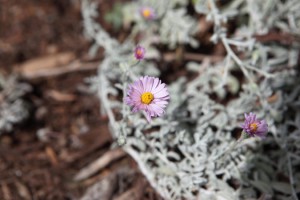AB 1881 Stimulates Local Governments to Tighten Landscape Laws
Significant changes will be made to local landscaping ordinances throughout California in early 2010. New regulations may vary significantly from city to city, but all will be designed to minimize water consumption associated with landscaping in predictable ways.
Who Will Be Effected?
Cities will be establishing new regulations or guidelines affecting:
- All projects that require permits, plan checks, design reviews and approvals, including both public and private development projects, and
- Existing properties undergoing landscape renovations
What Can Be Expected?
The state law requiring outdoor water conservation measures, AB 1881, has some very specific requirements and some general guidance that localities must define or enforce. In general, the policy:
- recognizes the benefits of landscaping beyond xeriscapes while encouraging efficient use of resources, particularly water, and
- establishes guidelines for designing, installing and maintaining landscapes that limit overall waste and conserve water.
AB 1881 requires localities to enforce a few specific guidelines, which include:
- Restricting overhead spray irrigation within 24 inches of a non-permeable surface
- Requiring drip irrigation or other low volume irrigation on slopes greater than 25 percent
- Incorporating “smart ET based irrigation controller and planting design… based on plant group hydrozones of water needs” into landscape designs
- Documenting of irrigation schedules and soil analysis reports
AB 1881 also requires localities to define and enforce regulations that limit the plant palate of landscape designers and architects to low water consumption varieties. Each locality will respond to this call with its own specific guidelines and enforcement mechanisms.
How LA County Is Responding…
In early 2009, the LA County Board of Supervisors created a sub-committee comprised of landscape architects and designers, city planners, and specialists in climate friendly plant material to determine how the county should address AB 1881 requirements. As a member of this committee, Cassy Aoyagi helped define a water-wise plant list for reference by homeowners and landscape professionals.
Changes AB1881 will likely stimulate in L.A. County and its municipalities include:
- Restricted plant palates for residential remodels and new construction on landscaped areas larger than 2500 square feet and existing homes “undergoing changeover” with landscaped areas of more than 5000 square feet
- Inspection and approval of landscaping plans and construction by municipal planning departments
- Escalating water rates and waste removal charges for high volume consumers
- More rebates and incentives for sustainable landscaping
When Will New Regulations Be in Place?
Each city is required to enact measures by January 31, 2010 and communicate their compliance to the California Department of Water Resources by February of 2010.
Why the New Regulations?
While the well-publicized limits to the Southern California water supply inspired many changes in water use guidelines and pricing in 2009, the new regulations are far from a crisis reaction. The impetus behind the coming regulations dates back more than 20 years. In 1990, in the midst of a 5-year drought, then-Governor Pete Wilson signed AB 325, requiring localities to enact and enforce water efficient landscaping ordinances by 2010. Ten years later, a report commissioned by the California Urban Water Agencies analyzed the ordinance’s efficacy and included extensive stakeholder interviews. AB 1881 resulted from this report and was designed to close the loopholes revealed in the study.
How Should We Prepare?
FormLA Landscaping has created vibrant and distinctive landscapes that exceed AB1881 standards for more than 10 years. These steps can help you make sure your landscape is also compliant:
- Have your irrigation system audited and make updates
- Look for areas where your hardscape can be made permeable
- Replace your lawn with a native meadow or native plants
- Replace your thirstiest plants with a wet to dry exchange substitute
- Add mulch to retain moisture in the soil
- Sweep instead of hosing hardscapes
More Information
- Cassy Aoyagi Biography
- Benefits of Sustainable Landscaping
- Water-Efficient Landscaping Tips
- LA County Drought Tolerant Plant List
- AB 1881
- Water Efficient Landscape Ordinance: A Statewide Implementation Review
- Theodore Payne Foundation
- Metropolitan Water District of Southern California
- City of Santa Monica Office of Sustainability and the Environment


